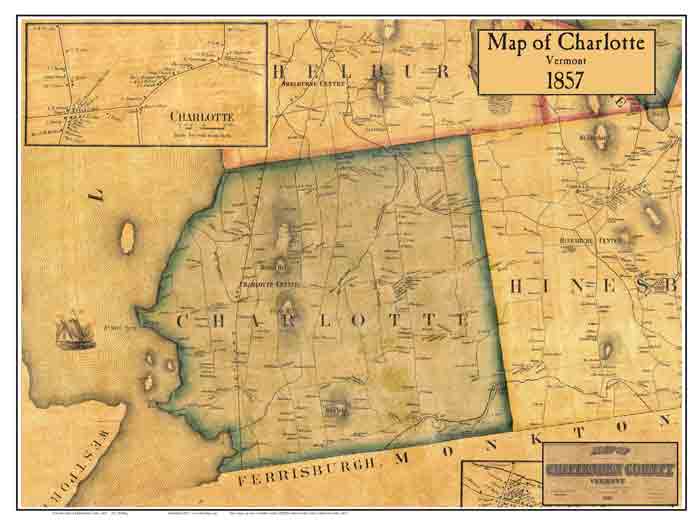
The State of Vermont was formed in 1791 by European-Americans. In 1839, the Town of Charlotte purchased 230 acres of shoreline, meadow and woodland at what was now known as Thompson’s Point. The Town of Charlotte in 1839 purchased 230 acres of shoreline, meadow and woodland at Thompson’s Point. By then white-tailed deer were nearly extinct in Vermont. The fish lasted longer but the taking of fish in the early to mid-1800s knew no limits and were taken with lines and nets during all times of the year (Langdon et al., 2006). Thompson’s Point was a camp grounds for mostly European-American but also African-American fishermen using the Bay as a fishing grounds, as well as a sportsman’s club for game birds (Harris, 1990). “There was a news report of over 100 persons fishing on the Thompson’s Point Fishing Ground in one day in August of 1871 and some of them were camping out on the Point.” (p.107). Fishing camps were instituted around the best fishing spots and during a week in 1873 for example, one group caught: 46 pike, 9 pickerel, 53 bass, 67 perch, 123 catfish, 4 eels, 1 ling [now called Bowfin or Burbot], and 2 gar (Glenn & Teetor, 2005, p.109). In 1874 the town began leasing lots and as a result, over time, campers moved out of their tents, and built camps among the cedars on 120 half-acre lakeshore lots.
By 1900, wolves and cougars had been extirpated. Lake trout and salmon had nearly disappeared (Langdon et al., 2006). By 1923, according to a long time fisherman, pike fishing was nearly “done for” and commercial fishing around Thompson’s Point ceased (Glenn & Teetor, 2005, p. 128). Thompson’s Point (and all the fishing camps in nearby bays) became summer cottage settlements. Much of the forest cover was cut for construction and farming (Harris, 1990).
Now 114 camps occupy 50 acres at the periphery of the Point which are zoned for seasonal summer use only. The remaining 180 interior acres are undeveloped meadow, pasture, agricultural fields, and woodland.
Next | Sections 1 | 2 | 3 | 4 | 5 | 6 | 7 | 8 | 9 | 10 Appendicies 1 | 2 | 3 Home



